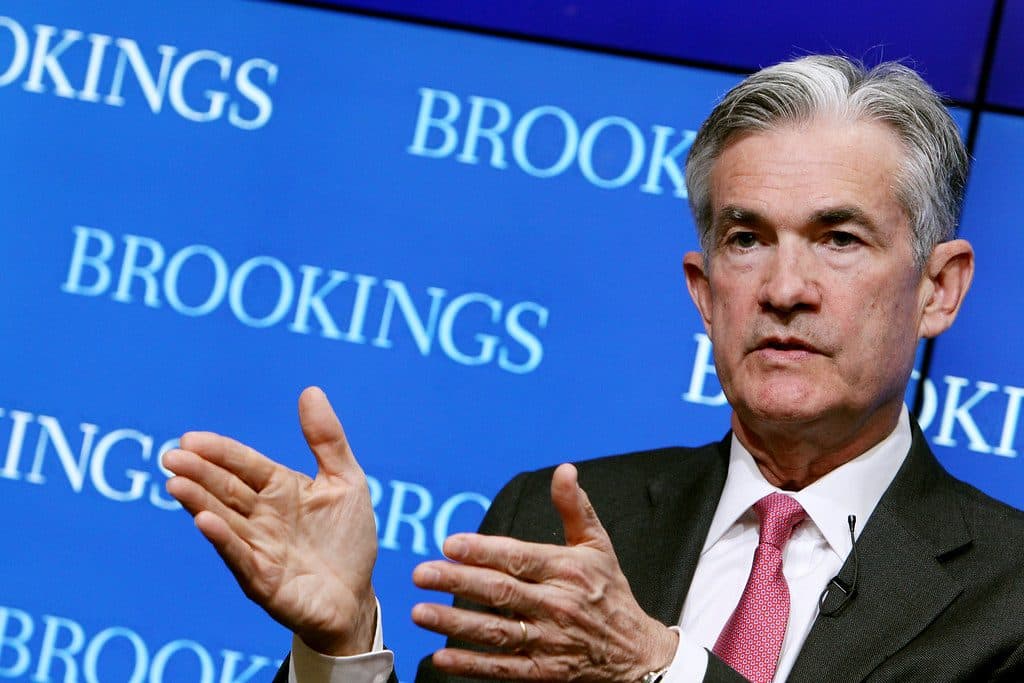As Reflation Picks Up Steam, Risk Assets Show Signs of Danger
Will the US be the next Japan or Argentina? The question, posed during a recent Blockworks webinar by Quadriga Asset Managers’ Diego Parrilla, is a reference to the infamous quote from Simon Kuznets. “There are four types of countries in the […]

Jerome Powell, Source: Sharon Farmer/sfphot. (CC BY-ND 2.0)
- Analysts on latest Blockworks webinar highlight commodities and precious metals as beneficiaries of reflation
- Rise in real rates will be Achilles heel to richly valued US tech stocks
Will the US be the next Japan or Argentina?
The question, posed during a recent Blockworks webinar by Quadriga Asset Managers’ Diego Parrilla, is a reference to the infamous quote from Simon Kuznets.
“There are four types of countries in the world — developed, undeveloped, Japan and Argentina,” said Kuznets, referring to the dichotomy between a country ravaged by hyperinflation and another that can’t seem to make inflation budge.
A few years ago, comparing the US with Japan or Argentina would have seemed laughable. Today, the comparison is feeling a bit closer to home.
A steep yield curve is dangerous for tech stocks
At long last, real economic activity is starting to recover. US PMI has been climbing steadily since April to just under 60, the highest level it’s been since 2018. Industrial commodities like copper and lumber are surging, and freight rates are soaring as economies struggle to bring supply back online.
Long-term interest rates are responding to the increased activity. The 10-year has steadily climbed its way back to 1.42% from its nadir of 0.51% back in August. While rising rates are a promising sign, they could spell trouble for US tech stocks that trade at a significant premium, according to panelists from Crescat Capital, Pervalle Global and Quadriga Asset Managers on a recent Blockworks webinar.
“The next year is going to be a supercycle for tangible assets,” said Tavi Costa, a Partner at Crescat Capital, during the webinar, adding that there will be pumped-up demand for anything that “protects you against the destruction of fiat currencies.”
“Very few people remember what inflation feels like,” he said. “The money party is going on and the money party can’t stop.”
Costa also noted that the negative real interest rates that are going to define the post-pandemic economy will be a driver for precious metals and commodities, at the expense of equities. While this might be a boon to commodity-rich Latin America, there’s also the immediate supply-side issue: underinvestment in the sector at a time when the discovery process is getting more complex, he said.
“The supply problem is another huge thing as there has been long years of under investment in this space. The exploration budget has been diverging from metals pricing,” Costa said. “Discovery is becoming harder and harder to find from a geological perspective in the precious metals and base metals space.”
The precious metal prescription
Costa said he sees parallels to 1919 — a period where the world economy was dealing with the aftermath of the first World War, and the end of the Spanish Flu.
Back then, the ability to hunt for new mineral reserves was limited due to most industrial capacity being tied up with post-war reconstruction. This exacerbated the problem, similar to what happens with present-day underinvestment in commodities because of market interest in technology.
“We had raw materials rising in prices and reaccelerated inflation again to the upside and this created a problem,” he said. “We all talk about the roaring twenties, but before the roaring twenties, there was a decline in equity markets caused by inflationary forces picking up significantly.”
What can the Fed do if inflation returns?
The Federal Reserve is stuck between a rock and a hard place.
Costa laid out a scenario: what if the price of West Texas Intermediate oil jumps to $100 per barrel and rates jump to nearly 3%? Oil is an input in almost every economic good, so prices have historically had a significant impact on inflation.
The problem with that scenario today is the record amount of federal debt the US government is under. The ratio of public debt to GDP was 123% in Q3 of last year, the highest it has ever been.
If inflation ever took off, this would put the Fed in a difficult position because raising rates would make the cost of servicing the debt untenable.
“How in the world will the government continue to fund this experiment of large amounts of debt, and large amounts of deficit?” Costa asked. “That is a very troubling scenario. You have to run the economy hot, suppress rates, all the while inflation is picking up. I don’t think the Federal Reserve has even been in such a corner — this is as tight as a corner as we’ve ever seen.”
Quadriga Asset Managers’ Parrilla may have said it best when summing up the last four decades of central bank policy into a single line: “During the last four decades, central banks have overseen the transition of risk free interest to interest free risk.”






